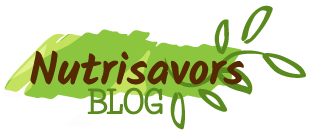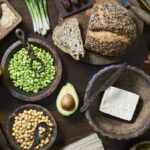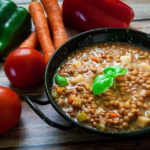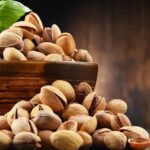Introduction: Understanding Hypertension
Hypertension, characterized by increased blood pressure against artery walls, is a prevalent health concern. Accurate diagnosis involves confirming abnormal readings through multiple assessments, emphasizing the importance of monitoring and early detection. Blood pressure values are expressed as systolic over diastolic, with normal levels below 120/80 mmHg. Pre-hypertension occurs between 120/80 mmHg and 140/90 mmHg, while hypertension is diagnosed at or above 140/90 mmHg.
Hypertension, often asymptomatic, can lead to severe complications like heart attacks, strokes, renal failure, and even death. Lifestyle modifications, including weight management, reduced salt intake, increased physical activity, avoidance of toxins (alcohol and tobacco), and adopting appropriate dietary habits, play a crucial role in primary prevention and treatment. The DASH diet emerges as a valuable tool in managing high blood pressure.
The Detrimental Effects of High Blood Pressure: Why It Matters
Untreated hypertension poses significant risks, making it a common concern in primary care. Uncontrolled hypertension can lead to life-threatening conditions such as heart attacks, strokes, and kidney failure. Early detection and appropriate intervention are crucial for effective management.
Decoding the DASH Diet for Blood Pressure Management
The DASH diet promotes the consumption of:
- Whole Grains: Legumes and whole grain cereals serve as primary sources of energy and fiber.
- Fruits and Vegetables: Rich in potassium, magnesium, and fiber.
- Low-Fat Dairy Products: Providing calcium and protein, with an emphasis on choosing low-fat or fat-free options.
- Lean Meat, Poultry, and Fish: Offering protein and magnesium, while red and processed meats are limited.
- Oils: Olive oil and margarine.
The DASH diet stands out for its emphasis on fruits, vegetables, low-fat dairy, whole grains, fish, and minimal consumption of sweets and sugary drinks. It restricts sodium, saturated fats, trans fats, and cholesterol while promoting fiber, potassium, magnesium, and calcium intake.
Research suggests that the holistic dietary pattern, rather than specific nutrients, contributes to the reduction of blood pressure. Originally designed to address hypertension, the DASH diet has demonstrated additional benefits, including lowering LDL cholesterol, making it an ideal choice for cardiovascular disease prevention.
A Sample DASH Diet Day: Lowering Blood Pressure through Nutrition
Breakfast:
- Glass of skimmed milk.
- Whole-grain toast with turkey.
Mid-morning Snack:
- Banana and walnuts.
Lunch:
- Lentil and salmon salad.
- Peach.
Afternoon Snack:
- Fat-free yogurt.
Dinner:
- Brown rice with vegetables, mushrooms, and chicken.
- Fat-free yogurt with raspberries.
Additional Recommendations for Blood Pressure Reduction:
- Maintain a Healthy Weight: Obesity is linked to hypertension, making weight management crucial.
- Increase Physical Activity: Regular exercise contributes to overall cardiovascular health.
- Stress Management: Learn effective stress management techniques.
- Adequate Rest: Ensure proper sleep for overall well-being.
- Limit Salt Intake: Restrict daily sodium intake to 3-5g.
- Moderate Alcohol Consumption: Limit alcohol intake.
- Quit Smoking: Smoking exacerbates hypertension; quitting is beneficial.
- Read Labels: Check sodium content in processed foods; choose fresh over processed whenever possible.
Identifying Sodium in Foods: A Practical Guide
Sodium is naturally present in most foods, but excessive added sodium is a concern. Kitchen salt contains 40% sodium, and awareness of hidden sodium sources is crucial. Check ingredient labels for added sodium content. Daily values can guide: 5% or less indicates low sodium, while 20% or more signifies high sodium content. Recognize alternate names for sodium on labels:
- Salt – Sodium chloride
- Sodium alginate
- Sodium benzoate
- Baking soda – Sodium bicarbonate
- Sodium caseinate
- Sodium phosphate
- Monosodium glutamate (MSG)
- Sodium hydroxide
- Baking powder – Yeast nutrient
- Sodium nitrate
- Sodium propionate
- Garlic salt – Onion salt
- Sodium sulfite
Comparing Sodium Content: Homemade vs. Store-Bought
Example: Spaghetti with Tomato Sauce and Vegetable Stew with Hake
- Purchased: 1,095mg of sodium
- Homemade: 135.7mg of sodium
Fresh, homemade meals significantly reduce sodium consumption, emphasizing the importance of choosing fresh produce whenever possible.
Conclusion: Empowering Health Through Informed Dietary Choices
In conclusion, adopting the DASH diet offers a holistic approach to managing hypertension and reducing cardiovascular risks. Beyond addressing high blood pressure, it contributes to overall heart health by targeting cholesterol levels. Coupled with lifestyle adjustments, this dietary strategy proves effective in promoting well-being. For further insights and expert guidance, explore our embedded links.













